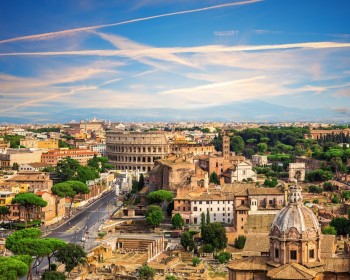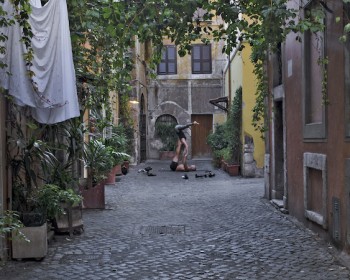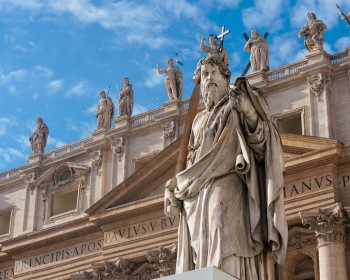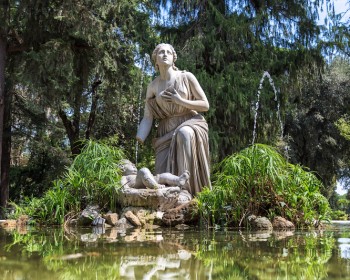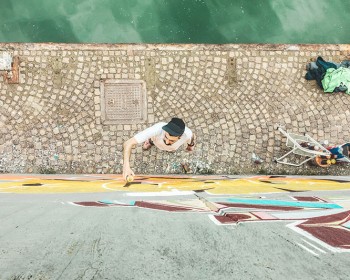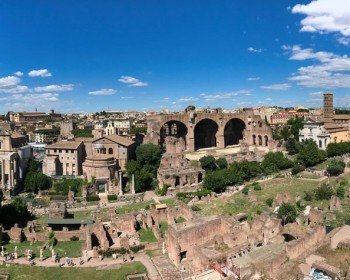With this blog we want to take you around Rome to discover the most beautiful and characteristic period villas in the capital. These villas we are going to describe are beautiful to see and famous, if you can't visit them you should at least get to know them!
If you are interested in discovering these Villas you can book an overall Private Tour of Rome with us.
Villa Borghese
Villa Borghese is a large park with several buildings inside, the most famous of which are : Casina del Lago, Casina dell'Orologio, Galleria Borghese Fortezzuola and the Villetta Doria.The gardens of Villa Borghese are immense and are home to several fountains, some used as decoration, some as a resting place and some lesser ones as natural features.
Villa Doria Pamphilj
The Villa Doria Pamphilj is a park in the city of Rome, which like many other city parks originates from the country estate of a Roman noble family. It is also the representative seat of the Italian government.
Covering an area of 184 hectares, it is the largest park in Rome and one of the best preserved 'villas' in the city: the only tampering is due to the opening of the Via Olimpica (Via Leone XIII), which divided the ancient estate in two.
Villa Doria Pamphilj covers a total area of 184 hectares and is considered one of the most important Roman villas, because it still retains after centuries the 17th-century layout and the main features of the 18th and 19th centuries.
The villa is divided into three parts: the palace and gardens (pars urbana), the pine forest (pars fructuaria), and the agricultural estate (pars rustica).
Villa Celimontana
The Villa Celimontana is a public park in Rome, located on the western summit of the Caelian Hill. This villa dates back to the 16th century and contains numerous artefacts from various periods and origins, which are displayed as ornaments. At the heart of the villa is the Palazzetto Mattei, seat of the Italian Geographic Society.
In the garden are countless monuments, statues and fountains that have great visual impact. Villa Celimontana is an essential stop on the list of the 10 most beautiful villas in Rome.
Villa Torlonia
Villa Torlonia is currently a public park, a villa located in the Nomentano district. Originally the agricultural property of the Pamphilj family, it was purchased at the end of the 18th century by the banker Giovanni Torlonia, who commissioned Giuseppe Valadier to transform the agricultural property into his own residence by building the Casino Nobile and the Casino dei Principi.
The villa houses inside its buildings the Museum of the Casina delle Civette, the Museum of the Roman School and the Museum of the Casino Nobile.
Villa Ada
Villa Ada houses numerous neoclassical buildings and is located in the northern part of the city, in the Parioli district. Villa Ada is the third largest public park in Rome. In addition to the royal villa, the park is home to numerous neoclassical buildings.
The villa, best known as the residence of the Savoys, who owned it from 1872 to 1878 and from 1904 to 1946, includes numerous buildings of various types and periods: the Casale known as 'La Finanziera', on the hill of the same name, the current headquarters of the WWF; the Fienile, used as an equestrian centre by the Cascianese society; the Casale delle Cavalle Madri, so called because of its use, in the Savoy era, as a shelter for mares about to give birth, coming from the stables at the Quirinale; the Villa Polissena, the Royal Stables, the Villa Reale, the Casino Pallavicini, the Temple of Flora, the Tribunes, buildings located along the boundary wall bordering the Via Salaria, and a series of factories linked not only to rural functions but also to residential ones, now owned by the State Property Office, private individuals and the Municipality.
Villa Giulia
Villa Giulia is a building in Rome located along the slopes of the Parioli mountains. The villa has a two-storey façade with a fully detailed triumphal arch. The façade is decorated with Doric pilasters. The rear part overlooks the first of three courtyards. In the centre is a true work of art, representing the deities of the rivers.



